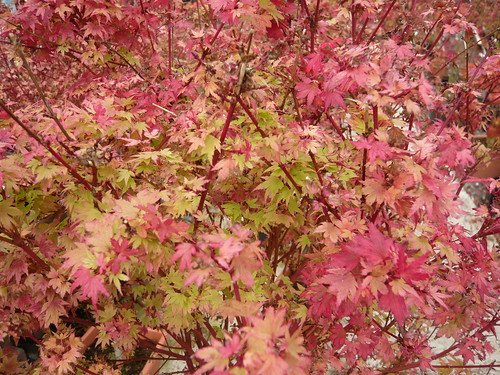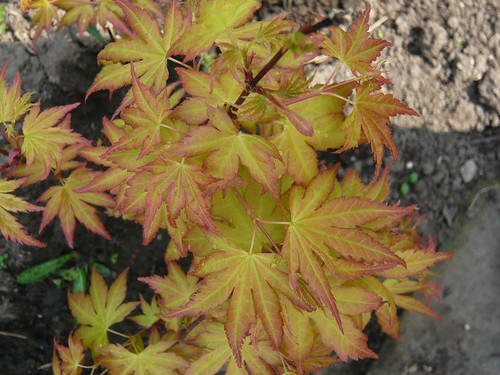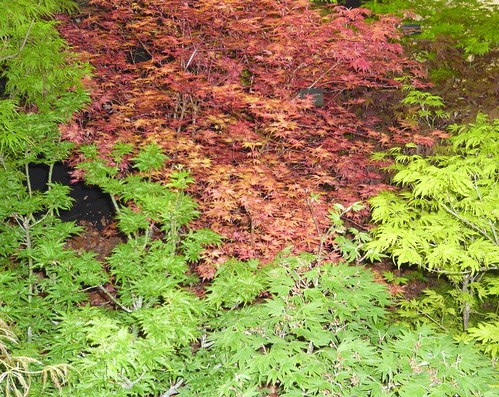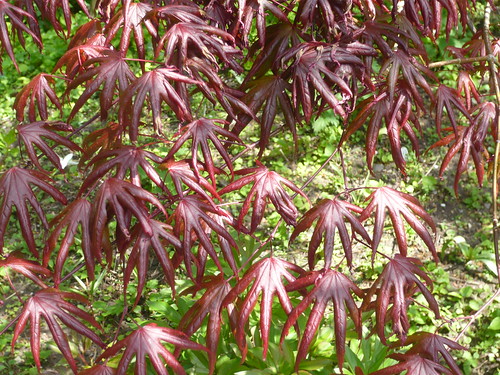
Japanese Maple – Root and Branch Review
Ornamental Japanese Maples are widely available for planting in your garden. The autumn colouring makes these trees spectacular when planted en mass in a woodland or Japanese garden setting.
Key Features of the Japanese Maple
- Latin name Acer palmatum or Acer Japonica, Japanese Acer
- Height up to 12m 45 feet with a graceful habit.
- Type of tree – Deciduous – dictoyledons
- Leaves – Palm shaped hence the name palmate with 5-9 deep, finely serrated lobes or fingers.
- Flowers Deep red in small inconsequential spreading heads
- Fruit Red winged seedheads in pairs. Known as keys.
- Bark Smooth brown/grey with pale longitudinal stripes
- Family Acer
Origins and Distribution of the Japanese Maple
- Native to China, Japan Korea and Taiwan.
- Cultivated in Japan for centuries for its colourful foliage and as a bonsai subject.
- Introduced in to Europe in 1820.
- Acers are a large family of trees including Sycamore and Maples.
Uses and Attributes of the Japanese Maple
- The main use is as an ornamental tree.
- Popular in parks and as feature trees in gardens.
- The autumn colouring of the leaves can be spectacular and contribute to tourism
- Like other maples they can bleed a syrup but I am unaware of any commercial product.
- Japanese acers are useful as an understory plant in shady woodlands.
Gardeners Tips for the Japanese Maple
- The leaves are thin and lacking in substance. Therefore they are easily damaged by wind and red leaves can burn or shrivel in the sun. Plant in a sheltered location
- Japanese maples are slow growing and can be grown in large containers or as bonsai
- Problems Growing Acer palmatum and In the name of Japanese Maples
Other types of Japanese Maple and key species
- There are hundreds if not thousands of cultivars varying in leaf colour from green, yellow and red
- Acer palmatum var. pubescens and Acer japonicum—Downy Japanese Maple
- Acer pseudosieboldianum—Korean Maple
- Acer shirasawanum—Fullmoon Maple
- Acer sieboldianum—Siebold’s Maple
- The national collection of over 100 different Japanese Acers is held at Westonbirt Arboretum, Tetbury, Gloucestershire, GL8 8QS and is well worth a visit. This is a wider selection of the Japanese Acers you may see there and growers add to their lists regularly: Acer palmatum ‘Aka shigitatsu sawa’, ‘Asahi zuru’, Acer palmatum ‘Akegarasu’, ‘Aoyagi’,’Ariake nomura’, Acer palmatum ‘Aureum’, ‘Azuma murasaki’, ‘Hagoromo’, Acer palmatum ‘Beni kawa’,’Beni kagami’,’Garnet’ See link for a full list
Japanese Maple comments from elsewhere
‘Maple collections, sometimes called aceretums, occupy space in many gardens and arboreta around the world including the “five great W’s” in England: Wakehurst Place Garden, Westonbirt Arboretum, Windsor Great Park, Winkworth Arboretum and Wisley Garden.
In the United States, the aceretum at the Harvard-owned Arnold Arboretum in Boston is especially notable. In the number of species and cultivars, the Esveld Aceretum in Boskoop, Netherlands is the largest in the world.’ Thanks to wikipedia




3 thoughts on “Japanese Maple – Root and Branch Review”
Comments are closed.